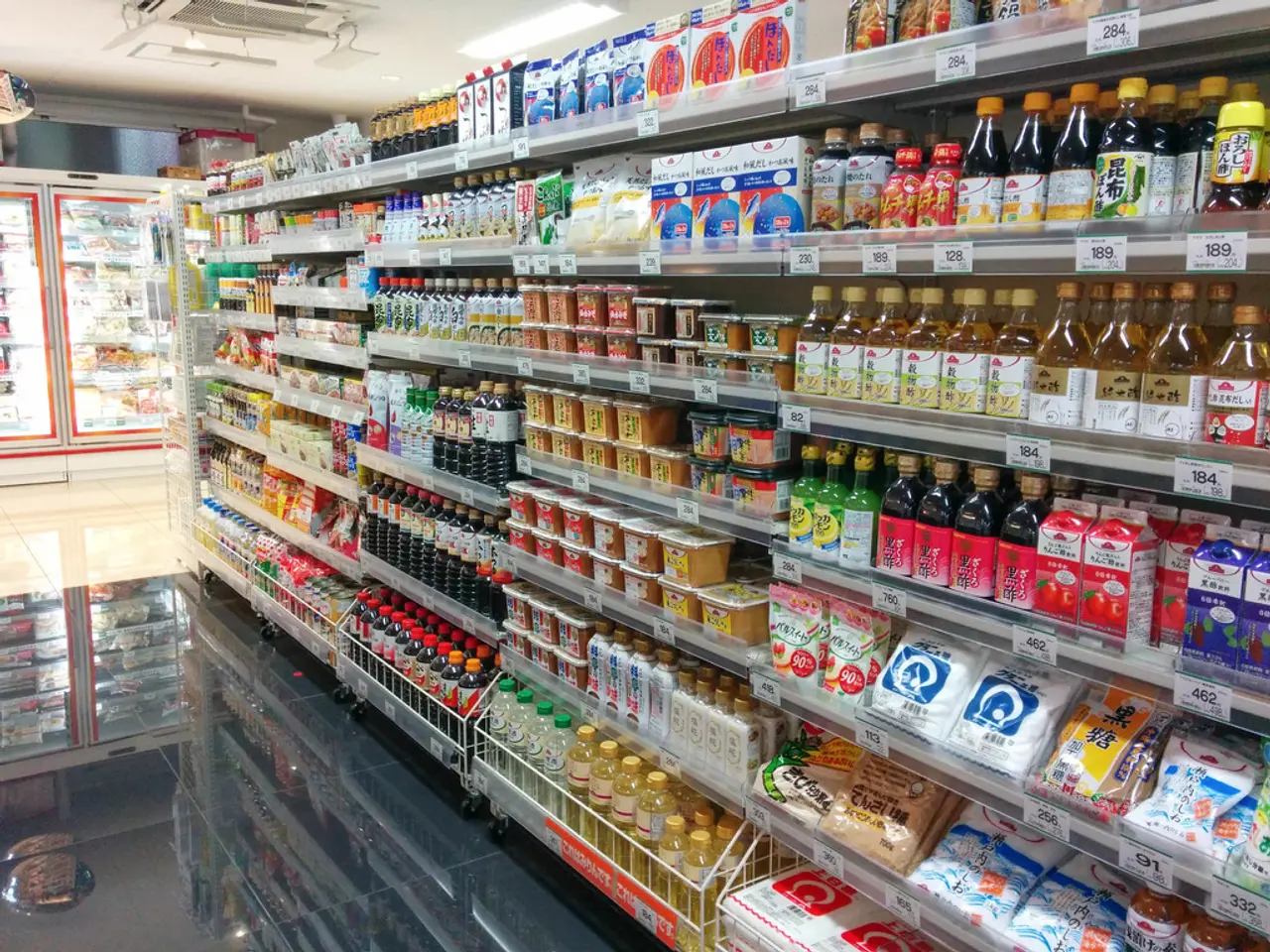Top 6 Meal Delivery Services with Minimal Sodium Content
In the realm of meal delivery services, an increasing number of options are now available for those seeking to manage their sodium intake. These services prioritize sodium content per meal, typically within the range of 300–800 mg, aligning with or bettering the USDA's recommended daily sodium intake of about 2,000–2,300 mg.
One such service is BistroMD, which stands out as one of the more affordable options, with prices ranging from $10.99 to $14.99 per meal, and initial discounts dropping costs to about $6.50 per meal. BistroMD includes plans tailored for dietary restrictions, such as low-sodium meals, and often includes shipping in the meal price, although this can vary by location.
Another service, Eat Clean, offers meals with less than 500 mg of sodium, some as low as 300 mg per meal, while Green Chef averages under 675 mg of sodium per serving. Both Eat Clean and Green Chef do not have explicitly stated per meal costs and shipping details in the sources, but meal kits like HelloFresh, which allow for sodium control during preparation, typically range widely in price and charge shipping fees depending on subscription and region.
HelloFresh does not have a designated low-sodium meal plan or filter, but it does offer some low-sodium meals. Users can help manage their sodium intake by limiting the salt they add when preparing their food. For those seeking a more structured low-sodium menu, Mom's Meals has a low-sodium food menu that follows American Heart Association nutrition guidelines, with meals containing 600 mg or less sodium and 10% or less saturated fat.
Preparing ingredients in advance can help save time during the week, and freezing vegetables is an option for those who regularly cook or eat vegetables. Users can refrigerate or freeze these meals for later consumption. To find low-sodium meals, look for plant-based meals or meals with a high percentage of vegetables and whole grains.
Following a low-sodium diet may help reduce blood pressure, and studies have shown that reducing salt intake can lead to a reduction in blood pressure. Low-sodium diets may also reduce the risk of stroke. It's worth noting that black people, those ages 50 years and above, and individuals with hypertension should not consume more than 1,500 mg of sodium daily to prevent health complications.
Whole foods tend to have lower levels of sodium than processed foods, making them a healthier choice. Batch-cooking is another way to save time by preparing several meals on the weekend and portioning them out in food-safe containers.
In summary, low-sodium meal delivery services offer a convenient and healthy option for those seeking to manage their sodium intake. Prices generally range between $7 and $15 per meal, depending on the service, plus variable shipping fees. Choosing the best option depends on balancing sodium levels, dietary needs, cost, and convenience of preparation.
- In the realm of meal delivery services, an array of solutions caters to individuals aiming to monitor their carb intake.
- For instance, Sun Basket, a service known for its organic and gluten-free offerings, has options suited for low-carb diets.
- The Fresh N' Lean service also provides low-carb meals, catering to a variety of dietary preferences.
- Some meal kits, such as Blue Apron, allow for customization, enabling users to select low-carb meal options or adjust recipes according to personal preferences.
- Opting for a nutritionist-designed plan can provide personalized low-carb meal plans tailored to one's specific nutrition needs.
- Restaurant-style meals, like those offered by Trifecta, often serve as high-protein and low-carb options, making them suitable for fitness enthusiasts or those managing medical conditions like diabetes.
- Aside from meal delivery services, grocery shopping for low-carb meals can be done online, with stores like Thrive Market offering a wide selection.
- Delivery services like Instacart can simplify grocery shopping, delivering low-carb grocery essentials directly to your home.
- When preparing low-carb meals, prioritize fresh produce, lean proteins, and whole grains while limiting processed foods and refined carbohydrates.
- Quinoa, chia seeds, and almond flour are excellent alternatives to high-carb ingredients, while veggies like cauliflower, spinach, and bell peppers make nutritious additions to meals.
- In the workplace-wellness sector, low-carb meal options are increasingly available as part of corporate catering services.
- For those with chronic diseases or specific medical conditions like diabetes or respiratory conditions, integrating digestive-health-friendly foods is crucial.
- Combining age-appropriate nutrition, such as foods rich in vitamins and minerals for eye health and hearing, should also be considered when planning low-carb meals.
- Maintaining skin-care by avoiding certain foods high in sodium, sugar, and saturated fats is essential for overall health-and-wellness.
- Fitness-and-exercise routines should be balanced with a low-carb diet to achieve optimal results in weight-management and cardiovascular health.
- Individuals with autoimmune disorders should discuss dietary adaptations with their health practitioners, as strict low-carb diets may impact the body's immune response.
- To cater to men's health needs, many meal delivery services offer a variety of meal plans, such as those high in protein and low in carbs.
- Skin-care regimens should integrate low-sodium and nutrient-dense foods for improved skin-conditions.
- Maintaining good relationships, pets, traveling, driving, learning, and personal growth can all benefit from following a well-balanced low-carb diet.
- Society's emphasis on home-and-garden, shopping, career-development, job-search, skills-training, and education-and-self-development can be supported through a low-carb diet and regular exercise.
- By choosing low-carb food-and-drink options, individuals can support their health as they navigate life's challenges and strive for personal growth.
- In addition to sodium, mindfully choosing foods that are low in saturated fats, cholesterol, and added sugars can further support healthy aging and womens-health.
- By incorporating low-carb meal planning, alongside regular fitness-and-exercise routines and therapies-and-treatments for specific health concerns, one can foster an overall healthy lifestyle that supports long-term well-being.





